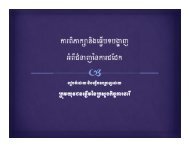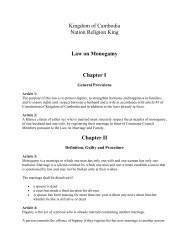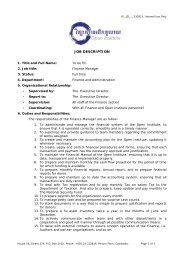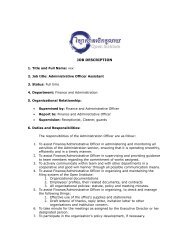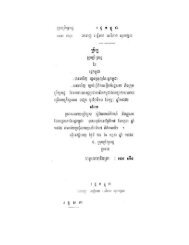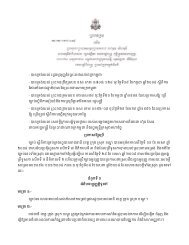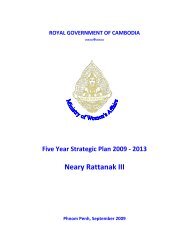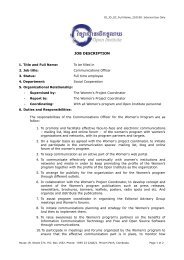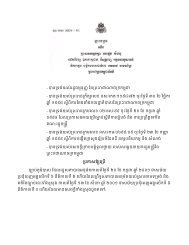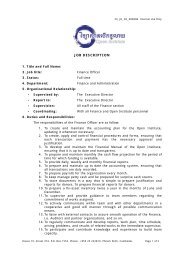Education Education An approach to some basic Indicators for ...
Education Education An approach to some basic Indicators for ...
Education Education An approach to some basic Indicators for ...
Create successful ePaper yourself
Turn your PDF publications into a flip-book with our unique Google optimized e-Paper software.
Catalog of Indica<strong>to</strong>rs Work/Labor 115 Name of indica<strong>to</strong>r: Maternity and paternity leave benefits rate Definition: It is the proportion of women and men who are working, have become parents and enjoy the right of maternity/paternity leave compared <strong>to</strong> the working populations (of each sex). Note: a maternity or paternity leave is a period of paid absence from work, <strong>to</strong> which a woman and men are legally entitled during the months immediately be<strong>for</strong>e and after childbirth. The benefit is not the same <strong>for</strong> men and women: men have the right of 10 days <strong>for</strong> paternity leave and women have up <strong>to</strong> 90 days (per year in both cases). Description: This indica<strong>to</strong>r measures the permitted coverage and enjoyment <strong>for</strong> both women and men. That is, the scope of maternity and paternity policies at both the administration and private enterprise. The lack of coverage in motherhood is a professional limiter obstacle <strong>for</strong> women, both in access and in professional development. Sec<strong>to</strong>r: Work/Employment Subsec<strong>to</strong>r: Labor conditions. Family and labor conciliation. Sources: [1] Better Fac<strong>to</strong>ries Cambodia 2012. ILO [2] http://www.prake.org/home/labour-‐law/maternity-‐at-‐work [3] Maternity at work. Examination of national legislation. Database of the ILO on the laws relating <strong>to</strong> conditions of employment. Cambodia. Geneva 2010 Unit of measuring: Percentage Formula: MI =WMlp +WMlu*100; For men: Pl =TWWPlp + PluTWM*100; Formula explained: Each <strong>for</strong>mula has different populations. For women, the maternity leave benefit rate is the division of all the maternity leaves taken (number of women with paid maternity leave + number of women with unpaid maternity leave) divided among the <strong>to</strong>tal female working population, and all it multiplied by 100. For men, the paternity rate is composed by the sum of all the paternity leaves (number of men with paid paternity leave plus the number of men with unpaid paternity leave) divided among the <strong>to</strong>tal male working population, and multiplied by 100. In <strong>for</strong>mulas: For women: Ml= maternity leave benefit rate; WMlp= number of women who




